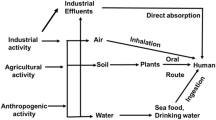Abstract
Certain esterase inhibitors such as O-(2-chlo-ro-2,3,3-trifluorocyclobutyl) O-ethyl S-propyl phosphorothioate (KBR-2822) and phenylmethanesulfonyl fluoride (PMSF) cause exacerbation (promotion) of toxic and traumatic axonopathies. Although these chemicals are capable of inhibiting neuropathy target esterase (NTE), which is the target for organophosphate induced delayed neuropathy, the target for promotion is unlikely to be NTE. Experiments were aimed to ascertain if neuropathy is caused by repeated dosing with a promoter not causing NTE inhibition and in the absence of deliberate injury to axons. Hens were treated with KBR-2822 (0.2 or 0.4 mg/kg per day) by gavage for 90 days and observed for clinical signs up to 21–23 days after treatment when histopathological examination was carried out. NTE and acetylcholinesterase (AChE) were measured at intervals and mean percentages of inhibition at steady state of inhibition/resynthesis (on day 20) were as follows: mean inhibition NTE was ≤8% in the 0.2 mg/kg group and between 15 and 18% in the 0.4 mg/kg group in brain, spinal cord and peripheral nerve; mean AChE inhibition in brain was 31 and 57% in the two experimental groups, respectively. Controls treated with paraoxon (not neuropathic or a promoter and given at 0.05 mg/kg per day by gavage) showed 45% mean AChE inhibition and no NTE inhibition. Neither clinical nor morphological signs of neuropathy were observed in any group. To ascertain whether sub-clinical lesions were produced by the repeated treatment with KBR-2822, hens were given KBR-2822 (0.2 mg/kg per day) for 21 days by gavage followed by PMSF (120 mg/kg s.c. 24 h after the last dose of KBR-2822). A control group of hens was treated with the neuropathic DFP (0.03 mg/kg s.c. daily for 21 days causing 40–50% NTE inhibition) followed by PMSF (120 mg/kg s.c.). After PMSF, the KBR-2822 treated hens did not develop neuropathy whereas DFP treated hens did. Lack of neuropathy after repeated treatment with KBR-2822 indicates that a continuous promoting `pressure' on hen axons is harmless in the absence of a concurrent biochemical or neurotoxic injury.
Similar content being viewed by others
Author information
Authors and Affiliations
Additional information
Received: 22 May 1997 / Accepted: 16 September 1997
Rights and permissions
About this article
Cite this article
Jokanovic, M., Moretto, A. & Lotti, M. Repeated low doses of O-(2-chloro-2,3,3 trifluorocyclobutyl) O-ethyl S-propyl phosphorothioate (KBR-2822) do not cause neuropathy in hens. Arch Toxicol 72, 93–96 (1997). https://doi.org/10.1007/s002040050473
Issue Date:
DOI: https://doi.org/10.1007/s002040050473




